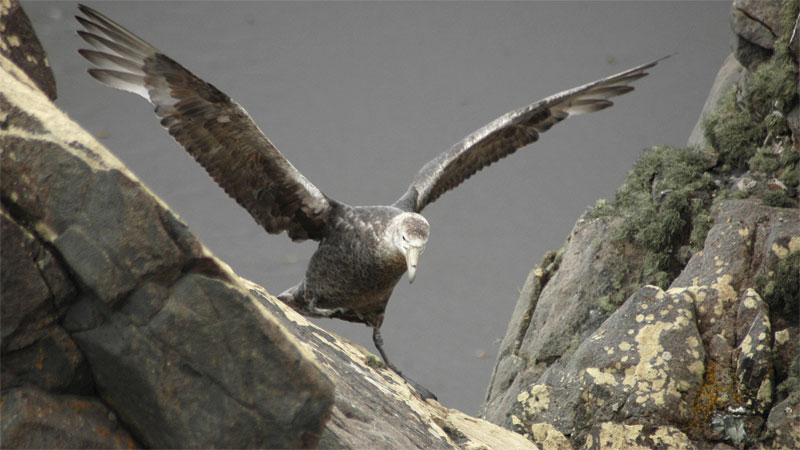

For the magnificent but maligned albatross, it was time for a little payback after centuries of insult and injury.
Snagged by longlines, tangled in nets, shot at by sailors, and scorned by poets as lazy or a bad omen, the world’s largest flying seabird is today a front-line agent in the fight against illegal fishing, according to a study published Monday.
Indeed, a squadron of 169 albatross fitted with cutting-edge communications gear revealed that a third of the vessels plying Antarctic waters below the Indian Ocean are very likely filling their hulls unlawfully with toothfish, ice fish, krill and other bounty from the icy waters.
On the high seas beyond national economic zones, anything goes.
But some of the choicest hunting grounds in that region lie within the territorial waters of South Africa around Prince Edward and Marion Islands, and France, near the Crozet and Kerguelen Islands.
“It’s the first time we’ve had an estimate like this for detecting illegal fishing ships,” said Henri Weimerskirch, a marine biologist at France’s National Centre for Scientific Research and lead author of the study, in the journal PNAS.
For six months starting in November 2018, the albatross -- which have the wingspan of a small car -- patrolled more than 47 million square kilometres (18 million square miles) of open ocean.
The birds are perfectly adapted for the mission, Weimerskirch told AFP.
They cover great distances and are particularly attracted to fishing boats -- especially the fish or fish parts thrown overboard.
To turn the albatross into high-flying spies, a team of scientists designed a light-weight device with a GPS antenna to track location, another antenna to detect ship radar, a third one to send the data back to headquarters -- and a solar panel to power them all.
The units were mounted on the backs of the birds, which seemed unperturbed by the extra cargo.
All registered fishing vessels have an automated identification system (AIS) that is supposed to remain activated.
‘Like drones, only intelligent’
“On certain Chinese or Spanish ships the signal suddenly goes silent when they approach an economic zone,” Weimerskirch said. “That means they’re fishing in the boundary area.”
That’s a problem for out-gunned enforcement forces and conservationists trying to prevent rogue commercial ships from emptying the oceans of edible lifeforms.
Most alternative monitoring systems are impracticable.
Flying is too costly and hit-or-miss. Satellite-based radars that detect metal mass are also expensive, and only work when the probe happens to be in orbit overhead. They can also be thrown off by choppy seas.
But even when a ship turns off the AIS system, it still needs radar to navigate and avoid collisions, which gave researchers something else to home in on.
Airborne albatross can spot a vessel from 30 kilometres away, and will consistently come in for a closer look once they do.
“They’re like drones, only intelligent,” said Weimerskirch.
When a bird zeros in on a boat, its logger detects the radar signal and sends the coordinates back to the scientists.
Of 353 radar contacts made, about 30 percent were from vessels that had turned off their AIS systems. If they were in national waters, that is a likely sign of illegal activity, the researchers reported.
Reviled in Coleridge’s 1798 epic “The Rime of the Ancient Mariner,” and mocked by French poet Baudelaire as ungainly on a ship’s deck, the albatross, it seems, has finally turned the tables.
Called Ocean Sentinel, the “proof of concept” mission is part of a larger programme exploring the use of animals in the gathering of data for conservation aims.
Also being tested in New Zealand and Hawaii, the technology could be adapted for other marine creatures such as sharks and sea turtles. — AFP
Oman Observer is now on the WhatsApp channel. Click here



